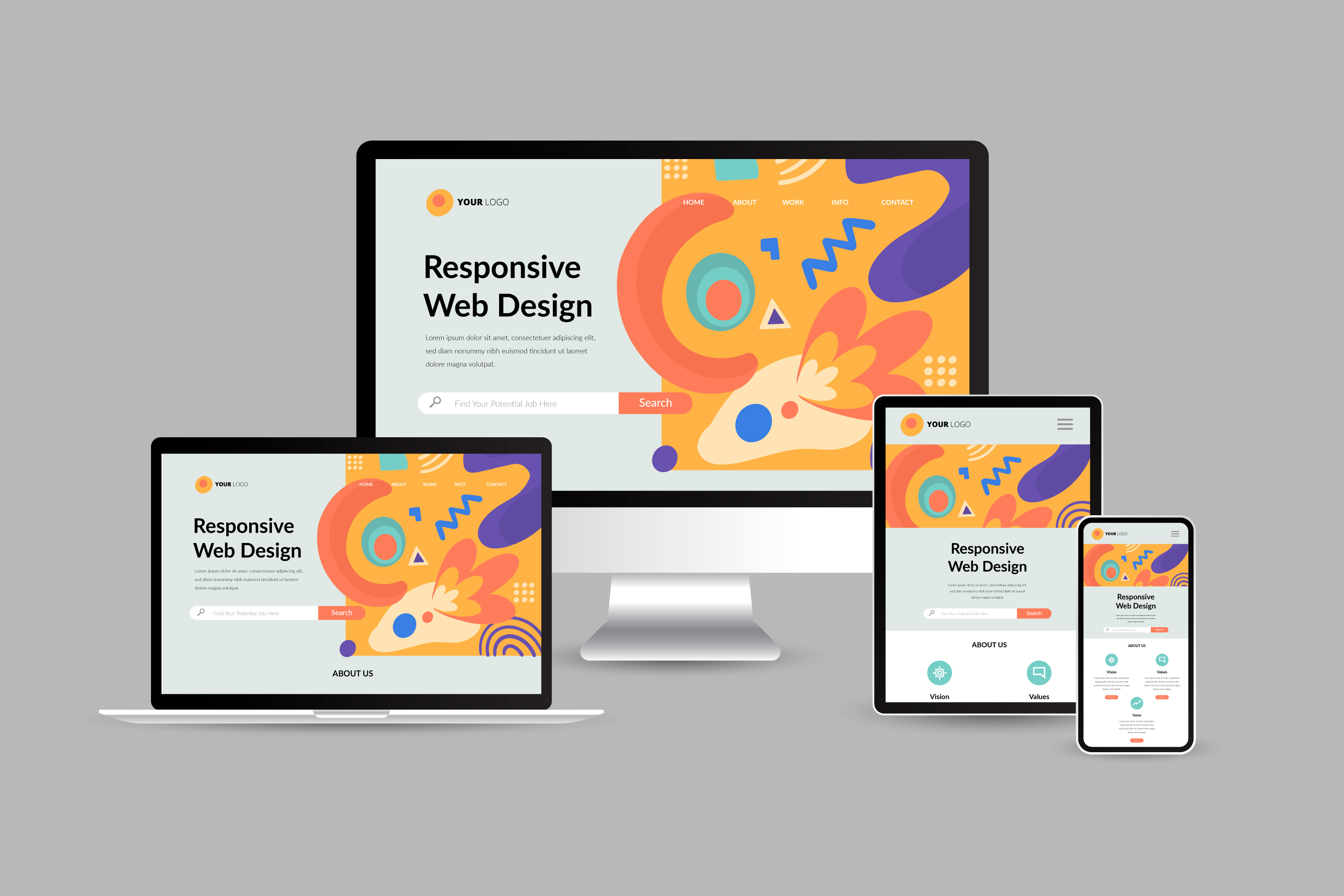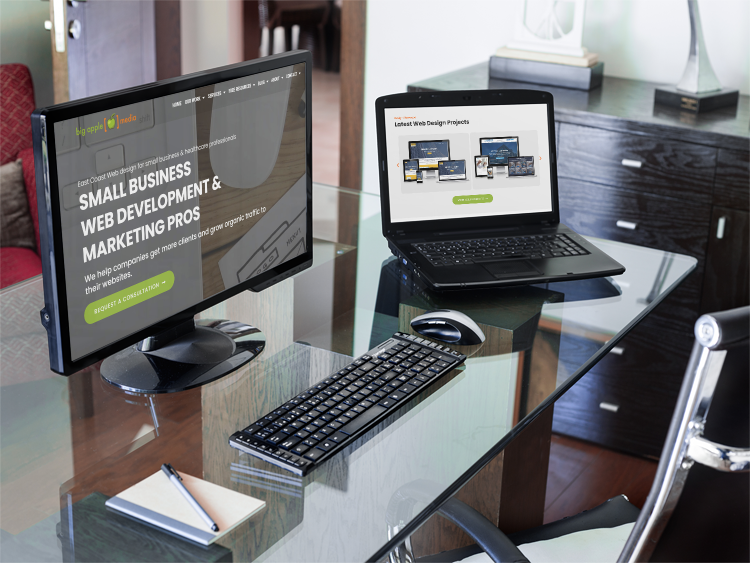Why Holistic Website Design Is the Secret to a Seamless Customer Experience
In today's electronic landscape, the importance of alternative internet layout can not be overemphasized, as it elaborately weaves together looks, use, and functionality to produce a smooth individual experience. By embracing an extensive approach that focuses on user needs and leverages feedback, developers can improve the overall interaction with their platforms. This tactical alignment not only fosters greater user fulfillment but also has far-reaching implications for brand name perception and commitment. Nevertheless, the journey to accomplishing this level of integration includes a number of essential factors to consider that warrant additional expedition.
Comprehending Alternative Website Design
Holistic website design incorporates an extensive strategy that thinks about every facet of the customer experience. This technique incorporates various components, including looks, capability, content, and use, to produce a smooth interaction between the user and the electronic system. By focusing on the customer's journey, all natural design seeks to align the site's structure and content with the requirements and expectations of its target audience.

In addition, the integration of receptive layout concepts is vital in fitting various tools and display sizes, even more enhancing the user experience. By recognizing the interconnectedness of these parts, designers can create websites that not just draw in yet also retain customers, inevitably driving interaction and conversions. All natural website design is, as a result, a tactical method that fosters a purposeful partnership between users and electronic areas, paving the way for sustainable on-line success.

Crucial Element of Holistic Design
An effective holistic layout method includes a number of crucial elements that operate in consistency to enhance user experience. One such element is user-centered layout, which emphasizes understanding customers' needs, choices, and behaviors. web design consulting services. By carrying out complete research and usability screening, designers can produce tailored remedies that reverberate with the target market
One more important element is uniformity in aesthetic and useful elements across the website. This includes keeping a cohesive color scheme, typography, and format, which aids users navigate the website with ease. In addition, responsive style is crucial, guaranteeing that the web site executes optimally throughout different tools and display dimensions.

Accessibility is likewise an essential component of alternative style. By adhering to availability criteria, developers can produce comprehensive experiences that deal with diverse customer groups, including those with disabilities. Furthermore, the assimilation of content strategy guarantees that valuable details is offered clearly and succinctly, improving understanding and interaction.

Benefits of a Seamless Experience
Developing a smooth user experience uses various advantages that significantly improve total satisfaction and interaction. At its core, a seamless experience cultivates a sense of ease and intuition, permitting users to navigate a site or application easily. This reduction in rubbing not just increases the possibility of individuals returning yet also improves their desire to advise the system to others.
Moreover, a seamless experience results in improved conversion prices. When users find what they need with marginal effort, they are a lot more likely to complete wanted activities, such as making an acquisition or enrolling in an e-newsletter. This performance converts right into greater consumer retention, as satisfied customers are most likely to end up being loyal advocates for the brand.
In addition, a cohesive and seamless interface decreases cognitive tons, permitting users to focus on web content as opposed to dealing with navigation or design incongruities (web design consulting services). This quality not only improves user contentment yet also strengthens brand name reputation. Eventually, focusing on a smooth customer experience causes an affordable advantage, as organizations that spend in this aspect are better placed to satisfy the evolving assumptions of their target market and drive long-lasting success
Carrying Out Alternative Methods
To attain an absolutely smooth user experience, organizations have to embrace alternative approaches that consider every element of design and performance. This technique begins with a linked vision that lines up employee throughout numerous disciplines, consisting of UX/UI style, web content growth, and technical implementation. Effective collaboration fosters a common understanding of customer demands and goals, enabling even more coherent layout options.
Following, it is critical to basics produce individual identities and journey maps that mirror the diverse demographics and habits of the target audience. By understanding with customers' point of views, organizations can prepare for obstacles and improve interactions throughout the electronic experience.
Furthermore, consistent branding and messaging need to penetrate every touchpoint, making sure a well-known and trustworthy existence that improves user engagement. Integrating responsive style principles is likewise crucial, as users now connect with web content throughout multiple tools.
Additionally, companies must focus on accessibility, making sure that all customers, despite capability, can navigate and benefit from their digital offerings. By installing these alternative strategies into the design process, companies can create a cohesive and delightful user experience that promotes satisfaction and commitment.
Measuring Individual Experience Success
While accomplishing a holistic technique to internet design is important, gauging individual experience success is equally vital to guarantee that design techniques efficiently meet individual demands. This calls for a mix of qualitative and quantitative metrics to obtain a detailed understanding of customer communications and contentment degrees.
Key efficiency signs (KPIs) such as user engagement, conversion prices, and bounce prices offer useful quantitative insights. A high conversion price may indicate that users find the style intuitive and compelling. Alternatively, raised bounce prices can indicate that customers are dissatisfied or baffled, necessitating a reevaluation of the layout components.
Qualitative procedures, including individual comments, surveys, and use screening, are important for gaining much deeper understandings into the read this post here individual experience. Examining customer comments can reveal discomfort factors and locations for enhancement, while functionality tests permit designers to observe real-time interactions and recognize barriers customers face.
Inevitably, the combination of these dimension strategies enables constant improvement of web design, guaranteeing it continues to be user-centered and reliable in supplying a smooth experience. On a regular basis reviewing these metrics will certainly allow developers to adjust to progressing user needs and choices, strengthening the overall success of an alternative website design technique.
Conclusion
In final thought, alternative internet design arises as a fundamental approach to attaining a smooth user experience. By integrating appearances, functionality, and usability, this style philosophy addresses varied individual requirements and choices. The emphasis on user-centered approaches not just enhances navigation and satisfaction but also fosters brand trustworthiness and ease of access. Inevitably, the execution of alternative style concepts substantially adds to enhanced conversion prices and consumer retention, developing a robust framework Get More Information for effective digital communications.